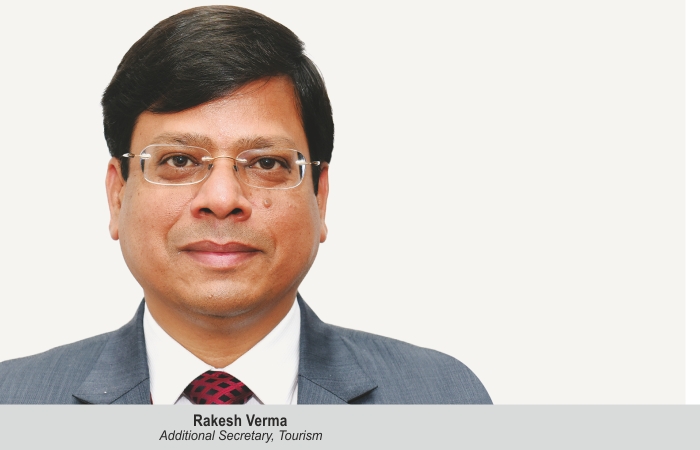Rakesh Verma, Additional Secretary, Tourism, shares details on the five missions that will be an integral part of National Tourism Policy to make the sector (tour operators) competitive. The aim is also to make tourism sector sustainable.
Nisha Verma
Rakesh Verma participated in the 36th IATO convention, where he was part of a panel discussion on digital marketing. Speaking of the same, he stated that the convention deliberated on important post-pandemic issues. The overall theme was Road to Recovery, and within that they discussed the challenges faced by the sector, particularly by the tour operators, and what measures need to be taken, both by the industry and the government.”They are compiling their recommendations based on the deliberations held at the convention and will be sharing those with the government and the Ministry of Tourism will take them forward,” he said.
National Tourism Policy
Speaking at length about the new National Tourism Policy, Verma shared, “MoT has been thinking of bringing a new tourism policy and, with the backdrop of the pandemic and its impact on the sector, MoT has come up with a draft National Tourism Policy, which tries to bring new structural changes to the sector and also lays down an ambitious framework for tourism growth in the coming decades.”
He revealed that the draft policy has five missions at its core. “First is the National Green Tourism Mission, which looks at mainstreaming sustainability in the tourism sector because that’s a key challenge the sector faces and it is also one of the lessons from the pandemic that we need to develop tourism on sustainable and responsible lines. The second is the National Digital Tourism Mission, because the digitalisation of the sector would unleash more opportunities. It can really make our sector more competitive.
“The third mission or pillar is the Tourism and Hospitality Sector Skill Mission. Here, we are looking at skills as a general framework, but within that, the tourism and hospitality sectors need to be aligned with the skill development framework, so that the sector will be ready from the supply side of manpower. This will make sure that we get employable young graduates and young people to serve in the sector, who can exploit the potential of opportunities that are offered by the tourism and hospitality sectors.”
The fourth mission is about destination management. “This is also crucial for the growth and development of destinations. The idea is to make sure that the public agencies and private agencies at the destination jointly work together to bring all stakeholders together and set a strategic plan for each destination, making sure that there are no gaps, and all of them synergise their efforts towards developing tourism potential of the destination.
“The fifth mission is focused on developing tourism and hospitality MSMEs. We have a lot of small and medium-sized players in our sector. All of them are largely informal. The aim is to formalise that sector, to meet the requirements of MSMEs, to meet the requirements of their capital, and credit and digital scales. This mission around MSMEs will help us develop them to create job opportunities,” he added.
He said that these five missions will provide a capacity for the sector to grow. “That’s how we have structured our draft policy. We are in consultation with the central ministries, state governments and industry. With the feedback we will be able to finalise it shortly. We will be releasing it in consultation with public or industrialists and may have workshops before the final consultation. Hence, in five to six weeks, we should be close to finalising the draft policy.”
Overseas offices
Saying that demand generation is one of the important aspects of tourism development and overseas markets in inbound tourism, Verma shared, “We have eight overseas offices for promoting tourism in those countries. Currently, staffing is a challenge, and we are sorting it out. Hence, we need to synergise the efforts of our offices and the mission officers to take inbound tourism forward. ”
NIDHI and SAATHI
Speaking of MOT’s flagship NIDHI and SAATHI schemes, Verma revealed that they have moved to the second phase, called NIDHI plus. “Here we will also take other tourism service providers on the platform as part of the National Digital Tourism Mission wherein we need to digitise data on destinations, attractions, and tourism service providers. We have now opened it to tour operators, and we are going to the next phase where our entire classification system is going to be revamped, and by January 2022, we should be able to complete that process.”
 TravTalk India Online Magazine
TravTalk India Online Magazine





